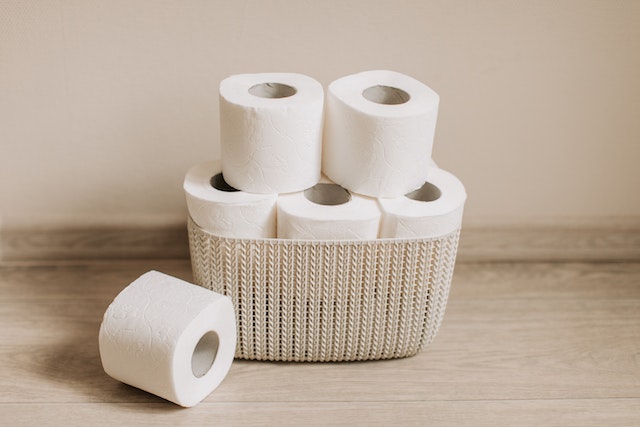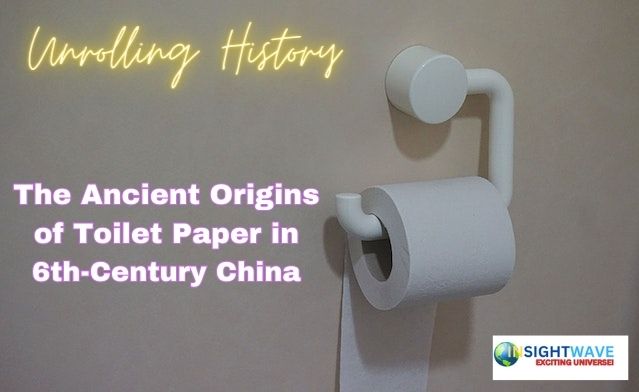In today’s world, toilet paper is a ubiquitous household item, an unassuming essential that we often take for granted. But have you ever wondered where this everyday convenience originated? Surprisingly, the first recorded use of toilet paper dates back to 6th-century China, a fascinating historical fact that offers a unique glimpse into the evolution of human hygiene and civilization.
In the annals of history, the invention of toilet paper stands as a testament to human ingenuity and the relentless pursuit of comfort and cleanliness. The earliest recorded use of this precious commodity can be traced to the Sui Dynasty in China, which reigned from 581 to 618 AD. During this period, the use of toilet paper was not as widespread or as readily available as it is today, but it marked the pioneering steps toward modern bathroom hygiene.
In its earliest form, Chinese toilet paper bore little resemblance to the soft, multi-ply rolls found in today’s bathrooms. Instead, it took the shape of rough, coarse sheets known as “zhi” or “zhǐ.” These sheets were typically made from a variety of materials, including rice straw, bamboo, and even fabric. The quality and softness of the paper varied depending on the region and the resources available.
Also Read : Debunking the Myth: The Great Wall of China’s Invisibility from Space
The Chinese people, always innovative and resourceful, recognized the value of using paper for hygiene purposes. The concept of disposable personal hygiene products was a significant leap forward in a society that was already advanced in areas such as art, science, and philosophy. While the use of toilet paper may have been a luxury available only to the elite during the Sui Dynasty, it marked a cultural shift towards greater cleanliness and comfort in everyday life.
The production and use of toilet paper in ancient China evolved over the centuries, gradually becoming more accessible to the general population. During the Tang Dynasty (618-907 AD), the imperial court even issued official guidelines on the standardization of toilet paper production. These guidelines included specific requirements for the size and quality of toilet paper sheets.

As centuries passed, the use of toilet paper in China continued to evolve. By the time of the Ming Dynasty (1368-1644 AD), the production of toilet paper had become more sophisticated. Sheets were sometimes infused with perfumes or herbal extracts to enhance their cleansing properties and leave a pleasant fragrance.
While toilet paper in ancient China was a significant development in personal hygiene, it remained a luxury item for much of the world. In medieval Europe, for example, the use of toilet paper was virtually unknown, and alternative methods such as leaves, moss, or even one’s hand were employed. The widespread availability of toilet paper would not become a reality until much later in history.
The modern toilet paper that we are familiar with today did not emerge until the 19th century. In 1857, American inventor Joseph Gayetty patented the first commercially available toilet paper in the United States. His product, known as “Gayetty’s Medicated Paper,” was sold in packages of flat sheets infused with aloe, designed to be torn off and used as needed.
Also Read : Love’s Circle: The Ancient Origins of Engagement Rings
Toilet paper’s popularity and availability soared throughout the 20th century, with improvements in production techniques and the introduction of perforated rolls. By the mid-20th century, toilet paper had become a household staple in most Western countries, and it remains a symbol of modern convenience and comfort.
In today’s world, it’s easy to take the simple luxury of toilet paper for granted, but its history is a testament to human innovation and the pursuit of cleanliness and comfort. From its humble beginnings as rough sheets in ancient China to the soft, multi-ply rolls found in bathrooms worldwide, toilet paper has come a long way in shaping the way we maintain personal hygiene.
So the next time you reach for a roll of toilet paper, remember that you’re continuing a tradition that stretches back over a thousand years, to the resourceful minds of the Sui Dynasty in 6th-century China. It’s a reminder of how small innovations in daily life can have a profound impact on our comfort and well-being, shaping our modern world one sheet at a time.


